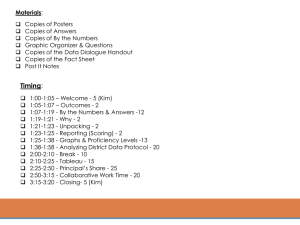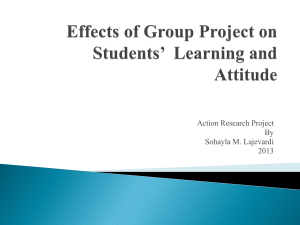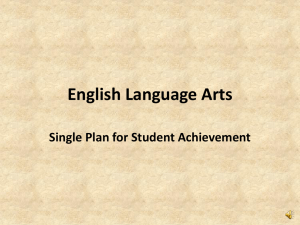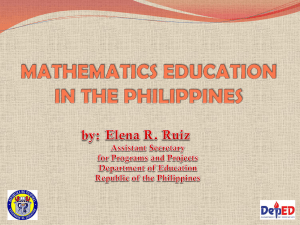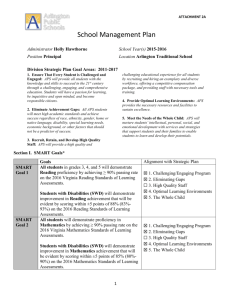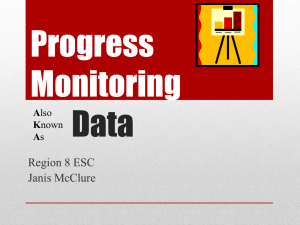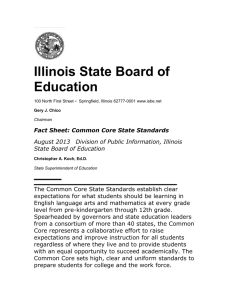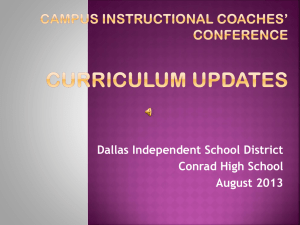Mathematics
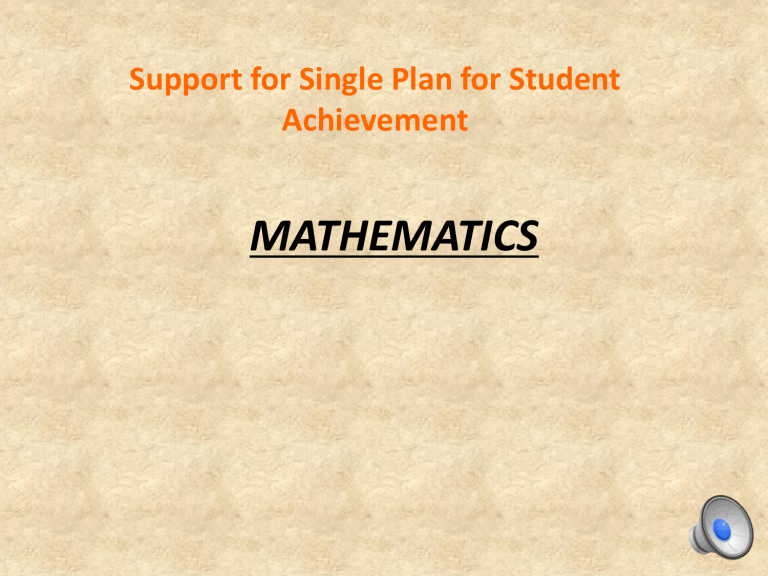
Support for Single Plan for Student
Achievement
MATHEMATICS
OBJECTIVE
• Provide guidance and support with completing 5 critical areas for the
Mathematics section of the SPSA.
• 1) Data Resources
• 2) Determine Findings
• 3) School Goal
• 4) Key Strategies
• 5) Actions/Tasks
Guiding Principles for Mathematics
• Guiding Principle 1: Learning
• Mathematical ideas should be explored in ways that stimulate curiosity, create enjoyment of mathematics, and develop depth of understanding.
• Guiding Principle 2: Teaching
• An effective mathematics program is based on a carefully designed set of content standards that are clear and specific, focused, and articulated over time as a coherent sequence.
• Guiding Principle 3: Technology
• Technology is an essential tool that should be used strategically in mathematics education.
• Guiding Principle 4: Equity
• All students should have a high quality mathematics program that prepares them for college and career.
• Guiding Principle 5: Assessment
• Assessment of student learning in mathematics should take many forms to inform instruction and learning.
From CA Math Framework
Indicate all student data used to determine
Findings and School Goal
Examples of Data Sources
• Elementary: CST Data (2012-2013), CORE
Waiver Data Report, Curriculum-Based Data
(Envision Chapter Tests, Benchmark Tests),
Student Work Samples
• Secondary: Student Grades, CAHSEE data,
CORE Waiver Data Report, MyData, CST Data,
Student Work Samples, Curriculum-Based
Data
Use the guiding questions to help determine Findings
Sample Findings
During the last three years, our Saturday School Math Intervention
Academy focused on students performing at proficiency levels of Basic,
Below Basic and Far Below Basic. Data analysis supports the finding that
60% of participating students increased proficiency in mathematics.
Despite these efforts, the school did not meet AYP targets and students with disabilities in grades 3 rd – 5 th showed only a 1% improvement.
• MyData content strand analysis indicates that students in grades 3-5 need additional instructional support in Number Sense (Fractions).
• Continuous monitoring of student performance using data charts, weekly assessments, and district assessments has led to progress being made in targeted content standards.
• The percentage of students scoring proficient or advanced on the CST increased 14.1% over the last five years, but only increased 1% last year.
Further analysis revealed that 3-5 th grade students with disabilities in particular demonstrated the lowest proficiency %.
The School Goal sets a measurable target for improvement based upon the LEA Goal and Findings from student data
[limit: one (1) School Goal per each Goal Matrix section]
Writing SMART School Goals – See Resource
Guide pp. 75-76
Sample School Goal
By ________ (e.g., June 2016), students will improve/gain ___% in the area of _________
(e.g., Number and Operations-Fractions) as measured by ____________ (e.g., curriculum assessments, performance tasks data.)
Sample School Goal
* By June 2016, 75% of students in grades 3-5 who participate in intervention will improve their proficiency in the area of Number and Operations-
Fractions as measured by our curriculum based assessments from the enVison Diagnostic and
Intervention program.
• Students in the general population will improve
10% in proficiency.
• Students with Disabilities will show accelerated growth with a 15% increase in proficiency.
Determine Key Strategy(ies) needed to achieve the
School Goal
Sample Key Strategy
• Implement a Tier 2 intervention mathematics program (enVision Diagnostic and
Intervention System) in the classroom for grades 3 through 5 to address the needs of students not meeting proficiency levels in the content area of Number and Operations-
Fractions, and accelerate the growth of students with disabilities.
Determine Actions/ Tasks needed to execute Key Strategy(ies)
3 Focus Areas
• Effective Instructional Program (Professional
Learning and Classroom Instruction)
• Maximizing Instructional Time
• Interventions to Close Achievement Gaps
Effective Instructional Program
(Professional Learning and Classroom Instruction)
Questions to Surface Thinking :
1) What training will we need in pedagogy and/or content?
2) What will we learn as a school about effective teaching for students with disabilities?
3) What training and/or coaching is necessary to successfully implement our intervention (Tier 2) program in the classroom?
4) Who is going to support teachers in their instruction?
Maximizing Instructional Time
Questions to Surface Thinking :
1) How will we apply our professional learning to maximize our instructional impact on students with disabilities?
2) In what ways will we provide support and promote effective learning to address the needs of our students with disabilities?
Interventions to Close Achievement Gaps
Questions to Surface Thinking :
1) What will we do for our students with disabilities who need more than good first instruction?
2) How will we implement our intervention program and conduct ongoing evaluations to determine student and program outcomes and inform ongoing program needs?
3) How will we ensure that our Tier 2 intervention program is flexible and dynamic?
• Jose Dorado—Specialist, Elementary Mathematics
Office of Curriculum, Instruction, and
School Support
(213) 241-6444 email: jld3168@lausd.net



